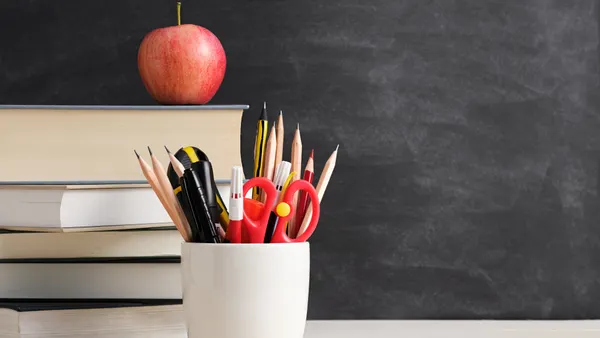In his 23 years as a barbering instructor, Marwin McKnight never imagined he would one day incorporate coding into his classes.
But in November, McKnight began working with his students at Fairfield Career and Technical Center in South Carolina using a program called Barbershop Computing.
This moment marked the first time Barbershop Computing was implemented in the U.S. with barbering students, said Dominick Sanders, computer science state supervisor for the South Carolina Department of Education.
The program uses basic block-based coding to help students create hair designs. Users can code to decide the size of the clipper, as well as the direction it moves, to create a style on a simulated head.
Utilizing barbershops to increase access
Michael Lachney, an assistant professor in educational psychology and educational technology at Michigan State University, spearheaded Barbershop Computing developed by Culturally Situated Design Tools. He said in an email that his team wanted to explore if barbers could be a source of innovation for computer education.
“Black barbers and barbershops have a long history of being centers for positive change in local communities, from participating in literacy campaigns to spreading public health information and being brokers between individuals and mental health resources,” Lachney said.
While a goal of the program is to come up with innovative ways to increase participation of Black boys and young men in computer science, Lachney said he hopes students’ interest in barbering as a career will also grow.
There’s a major initiative in South Carolina looking to broaden access and participation in computer science to underserved and underrepresented students, Sanders said. The Barbershop Computing program helps bridge that gap, Sanders said.
The recently released State of Computer Science Education report found while computer science course offerings have noticeably increased, disparities persist in access. Hispanic/Latino students are 1.4 times less likely than their White and Asian classmates to enroll in computer science, while Black students are enrolling in computer science classes at rates proportional to their state population, the report noted.
Lachney and his team are continuing to work with other educators and districts to incorporate the program into classes.

A new creative outlet
Barbers often hand-draw a hair design before they sit their client down and begin a haircut, McKnight said. The Barbershop Computing program gives students a new way to create designs they could have never drawn themselves, he said, adding that, in a way, it’s a whole new medium for barbers to create in.
“Everything about their artwork when it comes down to it is creativity, is in your mind,” McKnight said.
The class has helped McKnight’s students develop problem solving and creative thinking skills, too.
One of McKnight’s students, Kensley Copeland, is a junior at Fairfield Central High School and used the program to design a star with additional lines.
Copeland said he has participated in computer science classes before, which helped prepare him for the Barbershop Computing exercise. He wants to pursue a barbering career, adding he can see himself using code in his work moving forward.
In a way, Copeland said, it was fun to mess up at times and use the wrong code, because errors would create weird hair designs that amused him. The coding was initially challenging, but it got easier as he progressed, he said.
With the future growing more digital, Copeland said it’s important to include coding in barbering, as well.
McKnight also plans to continue using the program in future classes. He envisions barbers in the future utilizing the program to help create and then sell designs to barbershops. He also said he would love to see the program used in a competition format between students.










